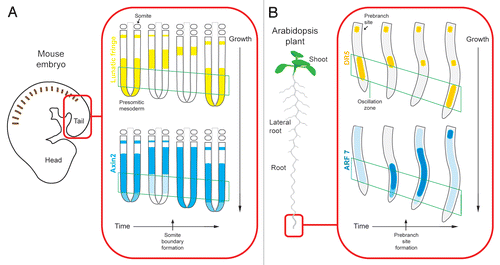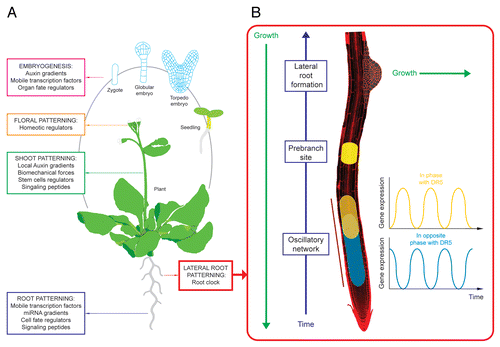Figures & data
Figure 1 Comparison of the expression patterns of the oscillating genes in the vertebrate segmentation clock (A) (adapted from PourquieCitation14 and DequeantCitation13) and in the root clock (B). Both the presomitic mesoderm and the root elongate from top to bottom in this schematic, as indicated by the arrow, while gene expression propagates in the opposite direction over time (as depicted from left to right). Gene expression oscillations in two opposite phases occur at the peak of the respective oscillations in the oscillation zones (green frames) as represented by Lunatic fringe and Axin2 in the segmentation clock (A) and by the marker gene DR5 and Auxin Response Factor 7 (ARF 7) in the root clock (B).

Figure 2 Patterning throughout the life cycle of the Arabidopsis thaliana plant includes hormone gradients, fate regulators, signaling molecules and the root clock (A). Positioning of new lateral roots is mediated by an oscillatory network at the root tip (the root clock) that establishes prebranch sites (B). Prebranch sites subsequently develop into new lateral roots.
